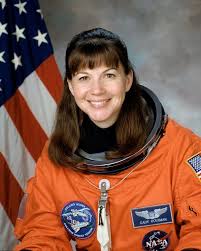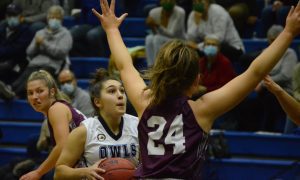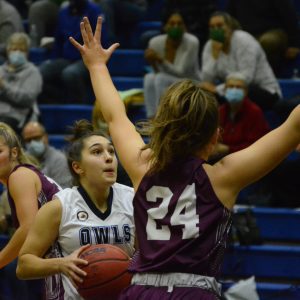
Former astronaut Dr. Cady Coleman.
WESTFIELD – Westfield State University kicked off STEM (Science, Technology, Engineering, and Mathematics) week Thursday, Oct. 15 evening with a remote event in which former astronaut Catherine “Cady” Coleman spoke about her experiences in space and how one should pursue STEM fields.
Coleman, who herself resides in Western Massachusetts, showed off some pictures and videos from some of her launches and from inside the International Space Station (ISS). She spent a total of six months in space throughout her life across three missions.
“I never really imagined that I would be one of the people doing something like this,” said Coleman as she showed an image of her first mission taking off.
Her first mission to space was a 16-day mission in 1995 in which she and her crew mates had to learn how to actually perform science experiments in a zero-gravity environment in the Spacelab Module. It was done in preparation for work that would eventually be done on the ISS.
“We knew that we were going to be having a space station, but we needed to figure out exactly how to do the science in space,” said Coleman.
Her second mission was a five-day mission in 1999 in which their goal was to deploy the Chandra X-ray Observatory. The orbital telescope was designed to measure x-rays emitted from distant objects. Extraterrestrial x-rays are mostly absorbed by Earth’s atmosphere, meaning an effective x-ray telescope must be deployed in orbit.
This mission was also significant to her because the Shuttle Commander was Col. Eileen Collins, the first female commander of a space shuttle mission.
Her third and final mission launched in 2010 as the NASA Space Shuttle program was being phased out. She instead was sent to the ISS via the Russian Soyuz rocket, which has been the primary method of travel to the ISS since then. Coleman spent 159 days straight in the ISS as the Chief of Robotics. She was responsible for operating arms of the ISS as well as participating in many of the experiments performed on the station.
Some of those experiments included attempting to grow plants without gravity, a task which will be paramount in traveling to and possibly colonizing Mars.
Coleman took the time to talk about how important it is to see more diversity in space programs but also in STEM fields in general. She said that there may be a sense of anxiety among women and minorities trying to enter these fields who feel as though they stand out or don’t belong in fields usually dominated by men.
She said that when one goes into a STEM field, especially in space, you become part of a team. The primary goal when one is in the ISS is to get their tasks and experiments done, she said, which is in each crew member’s best interest to do so. This helps foster a sense of trust among crew mates.
Coleman said that ISS crew members prepare for tenure on the station by learning to connect with each other and fostering a sense of community on the station. Most importantly, it is best to keep an open mind about people from other cultures.
“If you have an attitude of ‘I know what I am going to see’, then that is what you are going to see,” said Coleman.
During the Q&A portion of her talk, Coleman was asked about handling her long hair in space. She said it is not much of an issue, and she actually intentionally grew it out longer before traveling to space.
“When I was a little girl seeing pictures of the early space program and the Mercury 7, there was nothing in those pictures that made me think, ‘this could be me’”, said Coleman, “I wanted to make sure that when girls see pictures of me in space, they do get that feeling.”
To many people, the ISS may feel like some far-off concept that they will only see images of. The ISS, however, is only 250 miles above Earth’s surface, and is visible to the naked-eye far more often than one would guess.
Coleman urged everyone to visit Spotthestation.nasa.gov to find out when they can see the ISS pass over their area.
The next time the ISS should be visible to the Greater Westfield area on Oct. 20 at 6:16 a.m., but it will only be visible for one minute and at a height of 12 degrees, meaning it may be very difficult to see. Two days later however, on Oct. 22, it will be visible at 6:15 a.m. for three minutes at a height of 34 degrees appearing from the South/Southwest. It will likely appear to be a slightly dim star traveling very quickly across the sky.
In her final remarks, Coleman said that it is important to pursue one’s interests and to acknowledge that, no matter what, you are learning new things every day.
“It took me a long time to learn the things that I am good at,” said Coleman, “Make the best choice that you can, the one that feels right to you.”
She also urged everyone to not give up on their education, as it will help you make the choices you need to make to benefit one’s future self.
“You owe it to yourself to learn more than what your brain can tell you,” said Coleman.
WSU will continue STEM week with events from Oct. 19 to Oct. 23.





